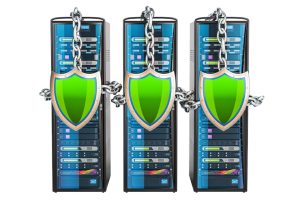VPS Security: A Pro Guide to Hardening and Monitoring
How to Handle VPS Security Like a Pro
A Virtual Private Server (VPS) offers incredible flexibility and control, but with great power comes great responsibility – especially regarding security. Leaving your VPS vulnerable can lead to data breaches, service disruptions, and reputational damage. This guide will delve into the essential practices for securing your VPS, covering everything from initial hardening to ongoing monitoring and proactive threat mitigation. Let’s fortify your digital fortress.
Initial VPS Hardening: Laying a Solid Foundation
The first moments after provisioning a new VPS are critical. Default configurations are often insecure and represent an easy target for attackers. Initial hardening involves a series of steps to minimize the attack surface and establish a secure baseline. This isn’t a one-time task; it’s the foundation upon which all subsequent security measures are built.
- Update Everything: This is paramount. Immediately update the operating system (OS) to the latest version, including all patches and security updates. Use the package manager appropriate for your OS (e.g.,
apt update && apt upgradefor Debian/Ubuntu,yum updatefor CentOS/RHEL). Automate this process where possible using tools like unattended-upgrades (Debian/Ubuntu) or cron jobs. Don’t just update the OS; update *all* installed software. - Change Default Credentials: Default usernames and passwords are widely known. Change the root password (or disable root login altogether – more on that later) and any default credentials for pre-installed software (databases, control panels, etc.). Use strong, unique passwords generated by a password manager.
- Disable Unnecessary Services: Every running service represents a potential vulnerability. Identify and disable any services you don’t need. For example, if you’re not running a mail server, disable it. Use tools like
systemctl(systemd-based systems) orservice(SysVinit-based systems) to manage services. Carefully consider the dependencies before disabling a service to avoid breaking functionality. - Firewall Configuration: A firewall is your first line of defense. Configure a firewall to allow only necessary traffic.
ufw(Uncomplicated Firewall) is a user-friendly option for Ubuntu, whilefirewalldis common on CentOS/RHEL. Implement a “default deny” policy – block all incoming traffic by default and then explicitly allow only the ports and protocols required for your applications. For example, if you’re running a web server on port 80 (HTTP) and 443 (HTTPS), only allow traffic on those ports. - SSH Hardening: SSH is a common entry point for attackers. Secure it by:
- Disabling Root Login: Prevent direct root login via SSH. Instead, log in as a regular user and then use
sudoto elevate privileges. - Changing the SSH Port: Changing the default SSH port (22) to a non-standard port can deter automated attacks. However, this is security through obscurity and shouldn’t be relied upon as a primary security measure.
- Using SSH Keys: Use SSH keys instead of passwords for authentication. SSH keys are much more secure than passwords.
- Limiting SSH Access: Restrict SSH access to specific IP addresses or networks using the
AllowUsersorAllowGroupsdirectives in thesshd_configfile. - Disable Password Authentication: Once SSH keys are set up, disable password authentication altogether in the
sshd_configfile.
- Disabling Root Login: Prevent direct root login via SSH. Instead, log in as a regular user and then use
- Remove Unused Accounts: Delete any user accounts that are no longer needed.
Beyond these core steps, consider implementing two-factor authentication (2FA) for SSH and other critical services. This adds an extra layer of security by requiring a second form of verification, such as a code from a mobile app.
Regular Security Scans and Monitoring
Hardening your VPS is not a one-time event. Ongoing security monitoring and regular scans are essential to identify and address vulnerabilities before they can be exploited. The threat landscape is constantly evolving, and new vulnerabilities are discovered all the time. Proactive monitoring allows you to stay ahead of potential attacks.
- Vulnerability Scanning: Use vulnerability scanners to identify known vulnerabilities in your OS and installed software. Tools like OpenVAS, Nessus, and Nikto can help automate this process. Schedule regular scans (e.g., weekly or monthly) and prioritize patching any identified vulnerabilities.
- Log Analysis: Regularly review system logs for suspicious activity. Look for failed login attempts, unusual network traffic, and unexpected errors. Tools like
grep,awk, andsedcan be used to filter and analyze logs. Consider using a log management system (e.g., ELK Stack, Graylog) to centralize and analyze logs from multiple sources. - Intrusion Detection Systems (IDS): An IDS monitors network traffic and system activity for malicious behavior. Snort and Suricata are popular open-source IDS options. Configure the IDS to alert you to suspicious activity.
- File Integrity Monitoring (FIM): FIM tools monitor critical system files for unauthorized changes. AIDE and Tripwire are common FIM tools. If a file is modified without authorization, the FIM tool will alert you.
- Resource Monitoring: Monitor CPU usage, memory usage, disk I/O, and network traffic. Unusual spikes in resource usage can indicate a security incident. Tools like
top,htop, andiotopcan help monitor resource usage. - Security Information and Event Management (SIEM): A SIEM system collects and analyzes security data from multiple sources, providing a comprehensive view of your security posture. SIEM systems can help you identify and respond to security incidents more effectively.
Automate as much of this monitoring as possible. Set up alerts to notify you of critical events, such as failed login attempts or detected vulnerabilities. Regularly review the alerts and investigate any suspicious activity.
Implementing Least Privilege and Access Control
The principle of least privilege dictates that users and applications should only have the minimum level of access necessary to perform their tasks. This limits the potential damage that can be caused by a compromised account or application. Effective access control is a cornerstone of VPS security.
- User Accounts: Avoid using the root account for everyday tasks. Create separate user accounts for each user and grant them only the privileges they need.
- sudo Access: Use
sudoto grant users temporary elevated privileges. Configuresudoerscarefully to restrict which commands users can run withsudo. Avoid granting unrestrictedsudoaccess. - File Permissions: Set appropriate file permissions to restrict access to sensitive data. Use the
chmodandchowncommands to manage file permissions and ownership. - Application Permissions: Run applications with the least privileged user account possible. Avoid running applications as root.
- Database Access Control: If you’re running a database, restrict access to the database to authorized users and applications. Use strong passwords and limit the privileges granted to each user.
- Network Segmentation: If you’re running multiple applications on your VPS, consider using network segmentation to isolate them from each other. This can limit the impact of a security breach.
Regularly review user accounts and permissions to ensure that they are still appropriate. Remove any unnecessary accounts or privileges. Implement a process for requesting and approving access to sensitive resources.
Backups and Disaster Recovery
Even with the best security measures in place, a security breach can still occur. Regular backups are essential to ensure that you can recover your data and restore your VPS to a working state in the event of a disaster. A well-defined disaster recovery plan is crucial for minimizing downtime and data loss.
- Backup Frequency: Back up your data regularly. The frequency of backups will depend on how often your data changes. For critical data, consider backing up multiple times a day.
- Backup Storage: Store backups in a secure location that is separate from your VPS. Consider using offsite backup storage or a cloud-based backup service.
- Backup Testing: Regularly test your backups to ensure that they are working correctly and that you can restore your data.
- Disaster Recovery Plan: Develop a disaster recovery plan that outlines the steps you will take to recover your VPS in the event of a disaster. The plan should include instructions for restoring your data, rebuilding your system, and notifying stakeholders.
- Snapshotting: Utilize VPS provider snapshotting features for quick recovery points. These are often faster to restore than full backups, but shouldn’t replace them.
Automate the backup process as much as possible. Use a backup tool that can automatically schedule backups and verify their integrity. Keep your disaster recovery plan up to date and test it regularly.
Securing a VPS is an ongoing process, not a destination. By consistently implementing these practices – initial hardening, regular monitoring, least privilege access control, and robust backups – you significantly reduce your risk of compromise. Remember to stay informed about the latest security threats and adapt your security measures accordingly. A proactive and layered approach is the key to maintaining a secure and reliable VPS environment, allowing you to focus on what matters most: building and growing your online presence with confidence.












